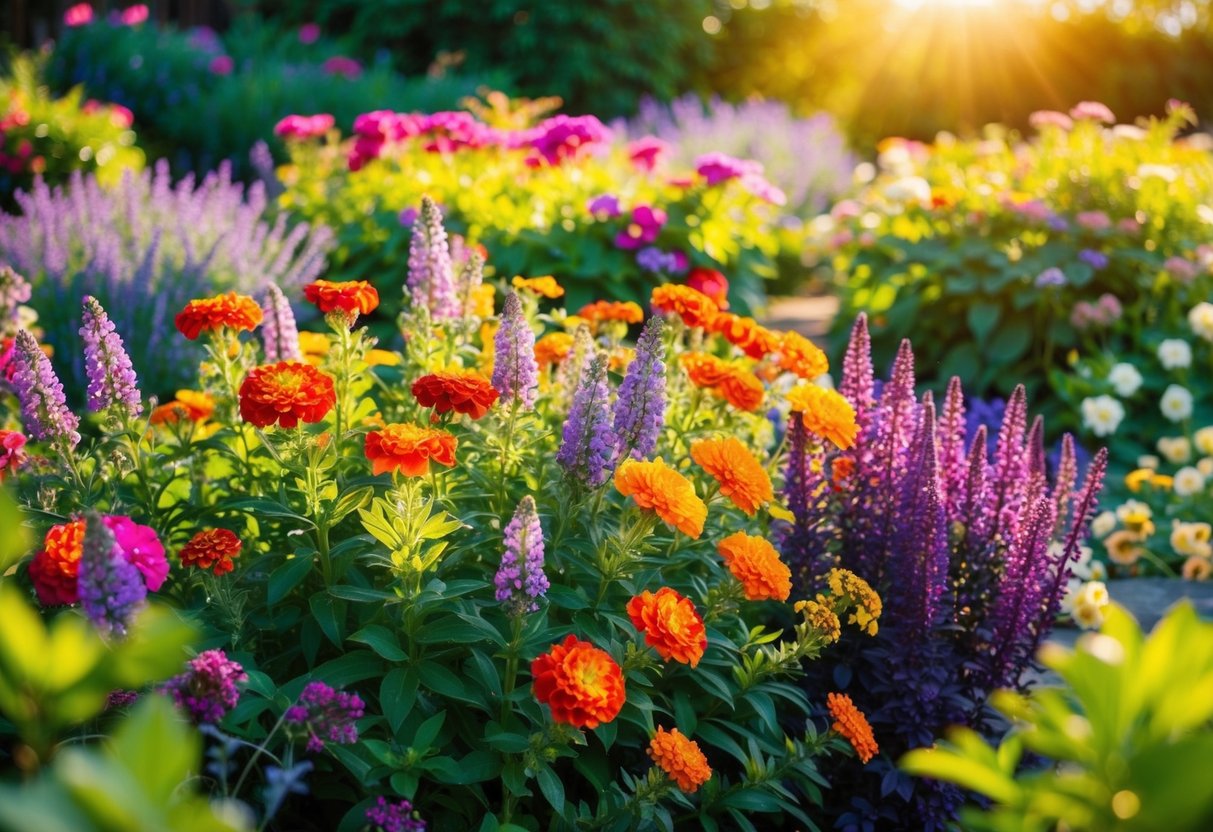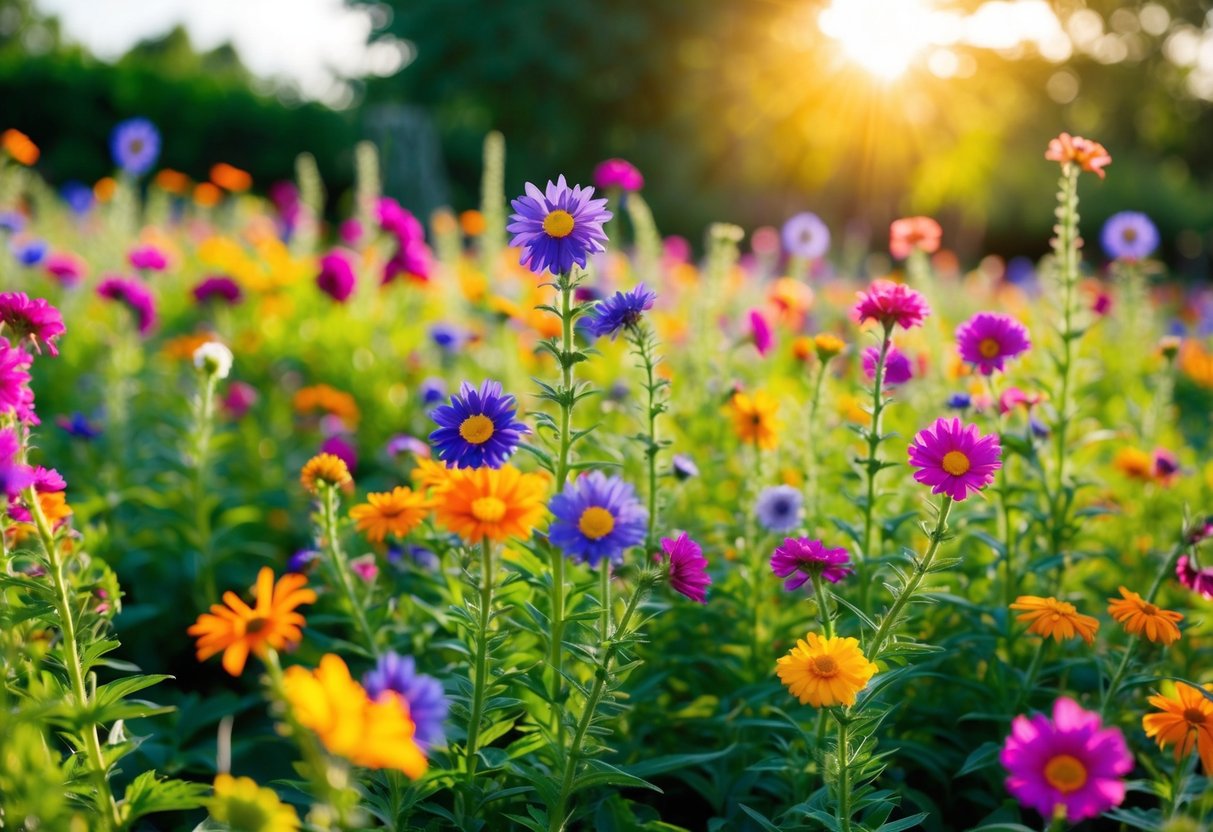What is the Fastest-Growing Perennial Flower? Discover Top Picks
Are you looking to add color to your garden with minimal effort? Perennials are perfect for this purpose. They come back year after year, saving you time and effort. Many gardeners appreciate their ability to thrive with less maintenance than annuals. This makes them ideal for both new and experienced gardeners.

When searching for the fastest-growing perennial, you should consider Catmint. Catmint is an excellent choice because it adapts easily to different soil conditions and grows quickly, providing lush foliage and delicate flowers. The plant’s ability to grow in various soil types means it can fit into most landscapes seamlessly. Catmint is also resistant to deer and rabbits, adding to its low-maintenance appeal.
Imagine your garden filled with vibrant blooms that attract butterflies and bees, adding life and movement to your landscape. Perennials like Catmint can create a beautiful, sustainable garden. As you plan your gardening project, consider the benefits of fast-growing perennials that make your garden look stunning and full of life.
Understanding Perennials

Perennials are plants that grow back year after year, providing lasting beauty in your garden. Unlike annuals, which must be replanted each year, perennials save you time and effort once they’re established.
Characteristics of Perennials
Perennials have unique traits that set them apart. One key feature is their ability to survive for multiple growing seasons. This means you don’t need to replant them annually. They come back from the same root system each spring.
You should also consider hardiness zones when choosing perennials. These zones indicate where a plant will thrive based on climate. Knowing your zone helps ensure your perennials will survive the winter. Perennials are available in a variety of colors and sizes, offering something for every garden.
Annuals vs Perennials
Understanding the difference between annuals and perennials helps in garden planning. Annuals complete their life cycle in one season, requiring replanting each year. While they can add a burst of color, they demand more work.
Perennials, in contrast, return each year, growing bigger over time. Though they might have a shorter bloom period than some annuals, perennials are a low-maintenance choice that provides structure to a garden. Consider your climate’s hardiness zone to ensure that perennials thrive and last through different seasons.
Ideal Conditions for Perennial Growth

When growing perennials, it’s helpful to know the right conditions they prefer. Factors like sunlight, soil, and watering can impact their growth.
Sunlight Requirements
Perennials usually love the sun. Most need full sun to thrive, which means at least six hours of direct sunlight each day. If your garden is more shaded, choose plants that do well in part sun conditions.
Some perennials are more adaptable, so don’t worry if you have less sunshine. Just make sure they get enough light to promote healthy blooming. Remember, light not only helps them grow but also ensures strong, vibrant flowers.
Soil Types for Optimal Growth
Perennials aren’t too picky but they do best in well-drained soil. This type of soil prevents water from pooling around the roots, which can lead to rot. If your garden soil holds too much water, consider adding sand or gravel to improve drainage.
Some perennials can grow in average to poor soil. They’re quite drought tolerant, which means they won’t mind if nutrition isn’t always perfect. By choosing these hardy types, you make maintenance easier for yourself.
Watering and Maintenance Needs
Many perennials are low-maintenance, which is great news for busy gardeners. While they’re drought tolerant, young plants need regular watering to get established. Once mature, they require less attention.
Water deeply but infrequently, encouraging roots to grow downwards. This makes plants more resilient in dry spells. Mulching around your plants helps to retain moisture and suppress weeds, simplifying your gardening routine.
Keeping these watering tips in mind will lead to a lush and lasting garden.
Popular Fast-Growing Perennials

Fast-growing perennials are perfect for adding quick beauty to your garden. These plants not only grow rapidly but also come in a variety of shapes and colors, offering a vibrant landscape.
Echinacea and Coneflowers
Echinacea, also known as coneflowers, are popular for their hardiness and vibrant blooms. You can find them in shades like pink, white, and orange. They attract pollinators, making your garden a lively spot. These plants do well in full sun and require well-draining soil. They’re drought-tolerant and great for low-maintenance gardens. The showy flowers also make them excellent for bouquets, adding a pop of color indoors.
Colorful Foliage and Flowers
If you want stunning colors, consider plants like daylilies, coreopsis, and gaillardia. Daylilies boast bright flowers and can tolerate tough conditions. Coreopsis offers long-lasting blooms in yellows and oranges. Gaillardia, or blanket flower, features fiery red and yellow petals. These plants thrive in sunny spots, producing a striking display that lasts through the summer. Their vivid colors can transform any garden into a kaleidoscope.
Groundcovers and Low Growers
For groundcovers, look at nepeta, also known as catmint, and sedum. Nepeta has gray-green leaves and lavender-blue flowers. It spreads easily, creating a soft carpet. It’s a favorite for borders and attracts bees and butterflies. Sedum, with its fleshy leaves and star-shaped flowers, offers year-round interest. These low growers thrive in rocky or sandy soils and are often used in rock gardens or as edging plants. Both options require minimal care and offer quick coverage.
Attracting Wildlife with Perennials

Using perennials in your garden can attract a variety of wildlife. You can create spaces for pollinators like bees and butterflies or choose plants that deer tend to avoid.
Creating a Pollinator-Friendly Garden
Pollinators, such as bees and butterflies, love certain perennials. Planting bee balm, also called Monarda, can invite these helpful creatures into your garden. Its bright and fragrant flowers are a favorite for many pollinators.
Echinacea purpurea, known as purple coneflower, is another excellent choice. This hardy plant not only looks beautiful but also provides nectar-rich blooms that attract butterflies and bees.
Lavender is a lovely addition and gives your garden a sweet aroma. Its purple spikes are adored by pollinators, providing both beauty and function.
By mixing these perennials, you create a lively and diverse environment. This can support the health and growth of important pollinators in your area, helping your garden thrive.
Deer-Resistant Varieties
Deer can be a problem for gardeners. Some perennials are less appealing to them, saving your hard work. Lavender is one such plant, disliked by deer but loved by pollinators.
Salvia is another excellent option. Its colorful blooms attract hummingbirds and bees, but deer tend not to enjoy it.
Many gardeners also find success with Russian sage. This plant has aromatic foliage that deer prefer to avoid. You can grow these varieties confidently, knowing they are both beautiful and hardy.
By selecting deer-resistant perennials, you can protect your garden while still supporting local wildlife, adding beauty without unwanted munching.
Designing with Perennials

Designing with perennials can transform your garden into a vibrant landscape. You can achieve a stunning display by carefully planning your layout, experimenting with colors and textures, and incorporating perennials into mixed beds.
Planning Your Garden Layout
When planning your garden layout, consider the space you have. Perennials come in various sizes, so knowing the dimensions of your garden helps. Tall plants, like certain varieties of hydrangeas, go well in the back or center of a flower bed. Shorter plants, such as lavender or sedums, look good along borders or in front.
Divide your garden into sections for organized planting. This allows you to maintain specific areas easily. Garden paths make it accessible, so plan for walkways to give easy access to different parts. Also, remember to leave enough space between the plants for growth.
Use graph paper or digital tools to sketch your design. This gives you a visual guide and helps in deciding where each perennial type should go. Think about sunlight and shade in each garden area, as different perennials have varying light needs.
Combining Colors and Textures
Colors and textures play a huge role in designing with perennials. Choose a color palette that matches your style. A garden filled with blues and purples might include catmint or Russian sage for cool tones. For something bolder, consider bright yellows and reds from plants like daylilies or coneflowers.
Textures add depth to your garden. Mix plants with smooth leaves, like hostas, with those that have textured foliage, like lamb’s ears. This contrasts well and boosts visual interest.
Consider seasonal changes, too. Perennials bloom at different times, so plan for changes in colors and textures through the seasons. This keeps your garden lively and dynamic all year round.
Perennials in Mixed Beds
Incorporating perennials in mixed beds can enhance your landscape design. Combine perennials with annuals, shrubs, and ornamental grasses for a natural look. This approach creates a varied and full appearance in your flower beds.
Use hardy perennials for a stable base since they return each year. Examples like Rudbeckia are excellent choices. Add some annuals for a splash of yearly new color.
Mixed beds require balancing plant heights and bloom times to avoid overcrowding. Think about seasonal care and maintenance. Remember that some plants may need special pruning or dividing as they grow. Regular care ensures a flourishing garden.







